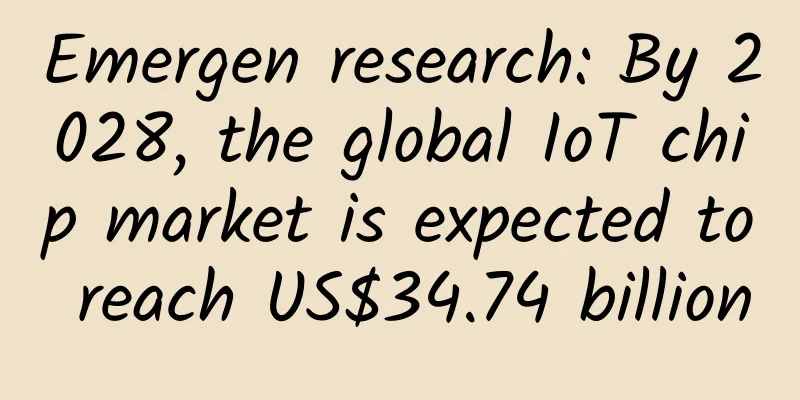Are you ready for 5G? Five new applications you'll see

|
Earlier this year, an article wrote: 5G will transform mobile network connectivity, and Apple has no viable way to get its next iPhone to connect to 5G networks. Its 5G supplier Intel is struggling to design the technology Apple needs, while the company is fighting for patent royalties with Qualcomm, the most likely alternative. So Apple and Qualcomm reached a settlement. It had no choice. Apple phones without 5G will not be competitive because 5G will fundamentally change the way people and businesses use the Internet. Apple's smartphones need 5G.
Just as 3G ushered in the smartphone era and 4G enabled mobile video and ubiquitous cloud services, 5G will fundamentally change business by dramatically increasing bandwidth and adding new technologies such as network slicing, which allows different types of network connections to be created over the same cellular backbone. Shirin Esfandarii, director of product marketing for Oracle Enterprise Communications, noted: “5G brings exciting new concepts to mobile networks, including policy-driven network slicing and service-based and cloud-native architectures.” Back in late 2016, PSB Research asked more than 3,500 business leaders, analysts and technology enthusiasts about their expectations for 5G, and almost all of them said they expected new products and services to emerge from 5G technology, with 87% even believing it would create new industries. As 5G networks roll out in China and other cities around the world, here are some of the apps you’ll soon see. 1. New video formats We’re not talking about the difference between MP4 and AVI video formats, instead think about 360-degree videos and similar video streams that can adjust to the user’s environment. “5G has the ability to support widespread use of advanced video formats such as 360-degree, augmented reality and virtual reality,” said Peter Linder, North America 5G evangelist for mobile device maker Ericsson. With the increase in 5G bandwidth and its advanced network capabilities, video and augmented reality can be combined with artificial intelligence in the cloud to achieve unprecedented, unimaginable adaptive video applications. 2. Customize the network Enterprises no longer have to choose between the public internet and custom network connectivity solutions. With 5G, mobile networks can be sliced and configured according to the needs of specific applications, customer groups or devices. For example, a high-reliability, low-latency, and high-security network can be easily created for mission-critical tasks such as emergency services, self-driving cars, or remote surgery. At the same time, another network that allows massive scalability can be established on the 5G network for IoT devices such as street lights and smart meters. After the launch of 5G, the network will no longer be a one-size-fits-all approach. Since 5G is cheaper and supports greater bandwidth, enterprises can use 5G networks to replace fixed broadband. 3. The fusion of reality and digital Right now, the relationship between physical retail stores and online stores is not yet strong. Consumers can order online and buy in person in stores, and technology such as QR codes make it relatively easy to scan items in person and learn about products or services online. The rise of 5G connectivity will improve this further as it opens the door to better IoT applications by reducing the power consumption of IoT devices, supporting more devices, and enabling better real-time interaction with servers in the cloud. 5G will especially shake up the retail industry. AT&T has developed a virtual shelf system called Endless Aisle, which allows customers to scan items in stores, customize them online, and have the items shipped directly to their homes. If customers find the right clothing in a store, but the color or size isn’t right, they can quickly order the right clothing online through the retailer while they’re in the store. Globaldata analyst Kathryn Weldon said concepts like Endless Aisle would change the rules of the business game. “It has the potential to change the way customers shop, which in turn will increase retailers’ revenues – important at a time when online shopping is significantly eroding the physical retail market,” she said. 4. Assisted on-site services We are increasingly using video calls rather than meeting in person, and once 5G rolls out, these virtual interactions will further deepen our engagement with the world around us. That’s because 5G enables assisted and virtual field services through augmented reality and the Internet of Things. Companies like TechSee and Thirdeye have already laid the foundation for senior technicians to remotely mentor less experienced employees, and once 5G is rolled out, this will move from a niche product to widespread adoption. What 5G can do for healthcare. “In healthcare, 5G’s high bandwidth and low latency will enable telemedicine, more efficient medical centers, better/smarter patient engagement and remote robotic surgery,” noted Toby Redshaw, Verizon senior vice president of technology strategy and innovation. “At Verizon’s New York 5G Lab, innovators in medical surgery, radiology and engineering are leveraging 5G, augmented reality and artificial intelligence to [create] 3D holographic renderings that can be viewed in real time directly within the operating environment,” he said. 5. The Eyes of Artificial Intelligence At another lab, this one in Austin, Texas, AT&T and Samsung are showing how 5G will transform manufacturing and open the door to using surveillance cameras to track the real world. With 5G, any mobile-enabled camera can feed video to AI in the cloud for real-time image analysis and decision making. This will lead to smart factories that can spot and take action on manufacturing defects without human intervention, retailers that can automatically charge customers for goods, and digital signage that can recognize customers passing by and serve them personalized ads. The combination of cameras and artificial intelligence could give rise to revolutionary new applications for 5G. 5G will change the way people interact with the world, beyond just a better mobile browsing experience in smartphones. New businesses will be formed, and existing businesses will find new opportunities and challenges for their business models. |
<<: [Heavyweight Tips] 5 steps to build a wireless network!
>>: WiFi is slow and stuck, maybe it’s a traffic jam
Recommend
Enterprise 5G: A guide to planning, architecture and benefits
Enterprise 5G deployments require extensive plann...
Justhost Hong Kong VPS upgraded to up to 10Gbps bandwidth, 20% off unlimited traffic, starting at $3.46 per month
I received a message from Justhost.ru, hoping to ...
5G will soon be available to ordinary people
Currently, 5G has become a hot topic in the indus...
Operators dig into the Internet of Things: IoT strategic transformation in four steps
Driven by both technology and the market, the IoT...
5G enters the second half, the difficulty of ToB lies in the "three highs"
More than two years after the licenses were issue...
One year after number portability: China Mobile and other operators use various means to "retain" users, and 70% of consumers encounter obstacles
Recently, the Shaanxi Provincial Communications A...
[11.11] Yecao Cloud: Hong Kong BGP network VPS annual payment starts from 83 yuan, Hong Kong international line annual payment starts from 79 yuan, Hong Kong independent server starts from 199 yuan/month
Yecao Cloud has brought this year's Double 11...
Is 4G enough? More than 40% of users turn off 5G function in new smartphones
So is 5G really that important? Is 4G no longer a...
Ruijie's Minimalist Lighting Appears at the University Informatization Development Seminar, Focusing on New Infrastructure of Smart Campus
On April 16-17, the 2021 University Informatizati...
VULTR: KVM in 25 data centers around the world starting at $2.5 per month (supports hourly billing), $50 for new users
It has been more than 6 months since I last share...
How to Make Ethernet Cable Longer
Looking to extend your existing Ethernet cable, o...
The pain of 5G indoor distribution! One million devices face replacement and transformation
Indoor coverage is the new battlefield for 5G. Mo...
The maturity of 5G technology is the key to the real implementation of autonomous driving
[[182056]] Recently, the news that "Huawei&#...
Run, AI! Huawei Cloud China Tour tells you the story of AI and applications going hand in hand
[51CTO.com original article] In fairy tales, when...
China's 5G is 10 times ahead, US companies abandon the "5G threshold" and turn to Korean companies to develop 6G
Recently, Google executives admitted that the Uni...









